Safety is Woodpecker Tree Care’s number one priority, and that extends to the day-to-day use of our bodies. Tree care is wonderful work, and it is strenuous work that demands the use of our minds and body every day. Part of keeping our work high quality involves taking care of our bodies and our minds.
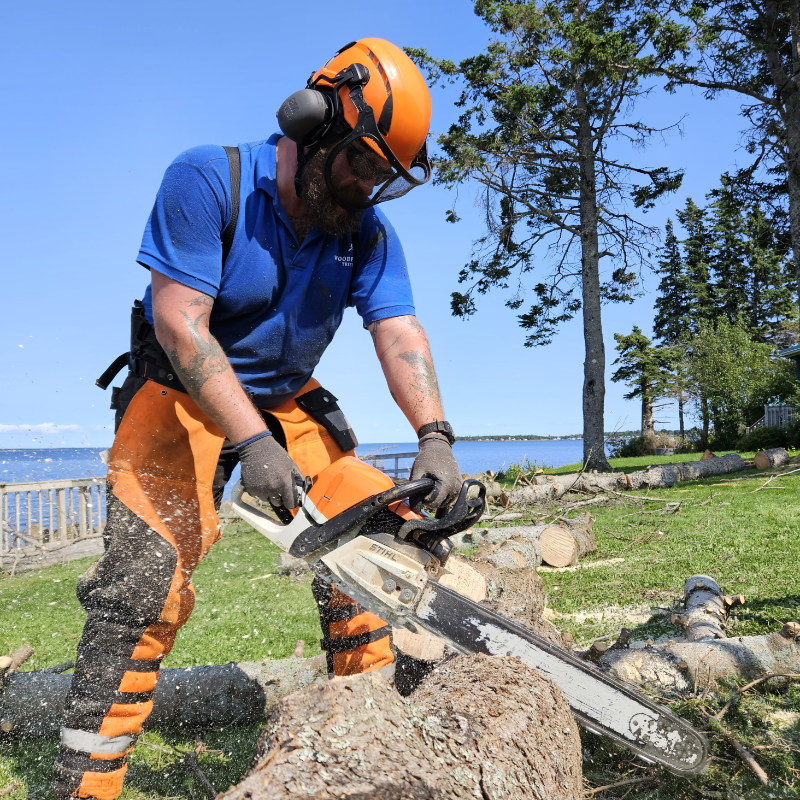
When it comes to heavy lifting, the Woodpecker policy is “only lift objects if you could lift two of them.” In other words, we try to only carry 50% of what we are able to prevent back injuries. We try to let our equipment do the work when it comes to heavy lifting. Recently we acquired an arbor trolley to help haul large logs and saplings from place to place.
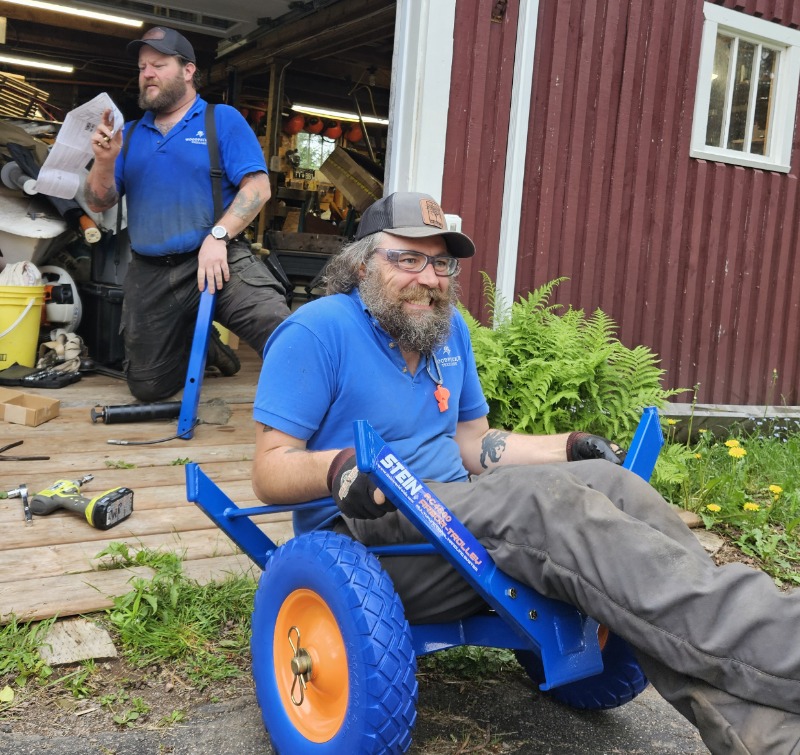
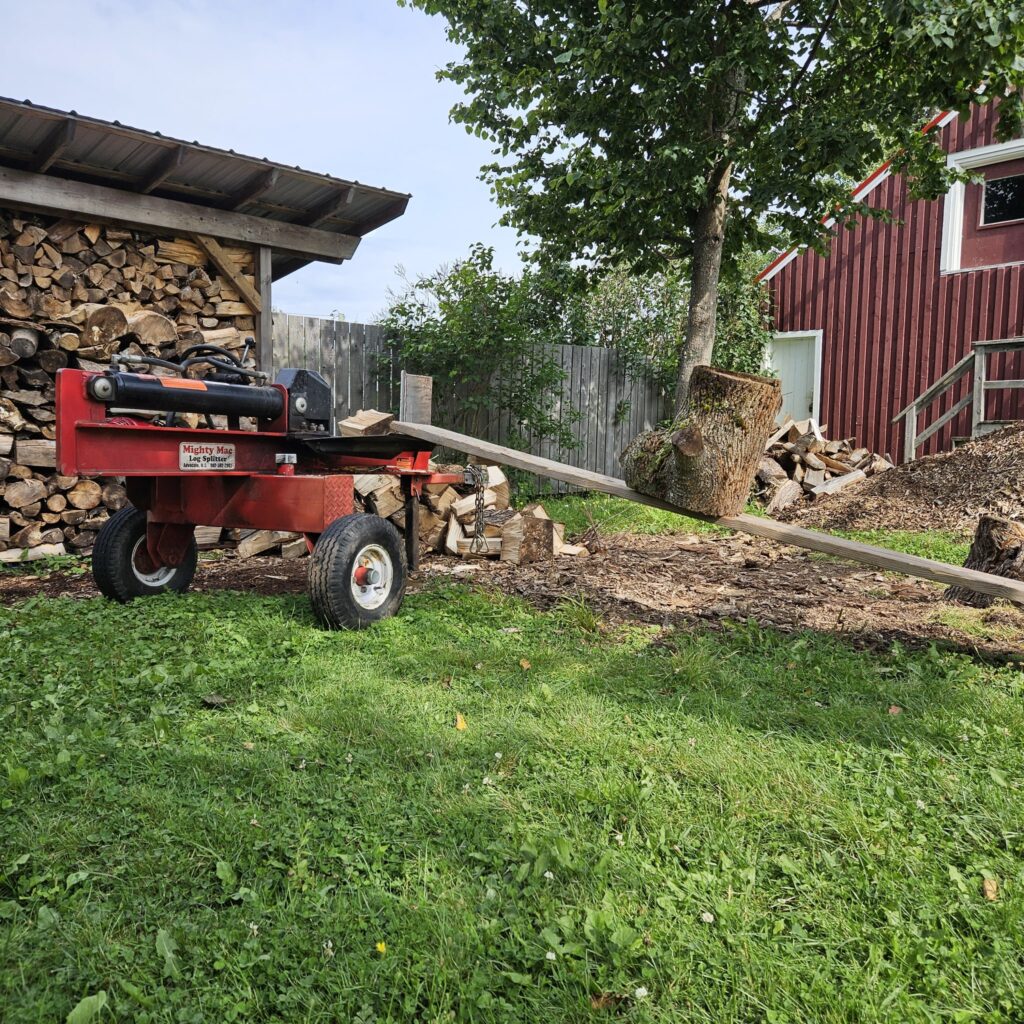
We will also use physics to our advantage to keep from lifting wherever possible. One of our favourite go-tos is making ramps to move logs into or out of a trailer/vehicle.
Our climbers have an array of tools and techniques to help them maneuver up and around trees without relying entirely on their strength. Rory uses a variety of ascenders allow him “walk” up the length of a tree, and recently replaced his spurs so that he doesn’t need to stomp as hard on a tree to get solid footing (that’s really hard on your knees!). The climbers will use their ropes, lanyards, and the tree itself to support themselves while high in the sky, and keep their loads light while in the canopy.
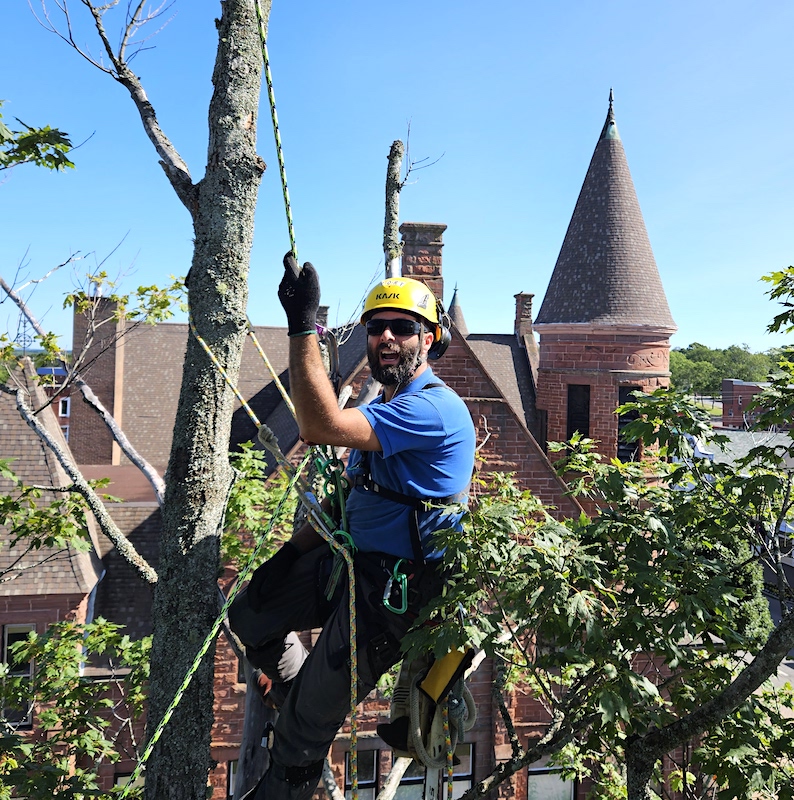
After an injury, Kevin has had to revisit tree work ergonomics step-by-step as he gets back in the field. He spends many hours per week exercising and practicing tree work skills in a controlled and deliberate fashion to prevent the injuries from flaring up. Practicing ascension repeatedly, while paying attention to his knees and elbows, has helped him stay on the job (and not in pain).
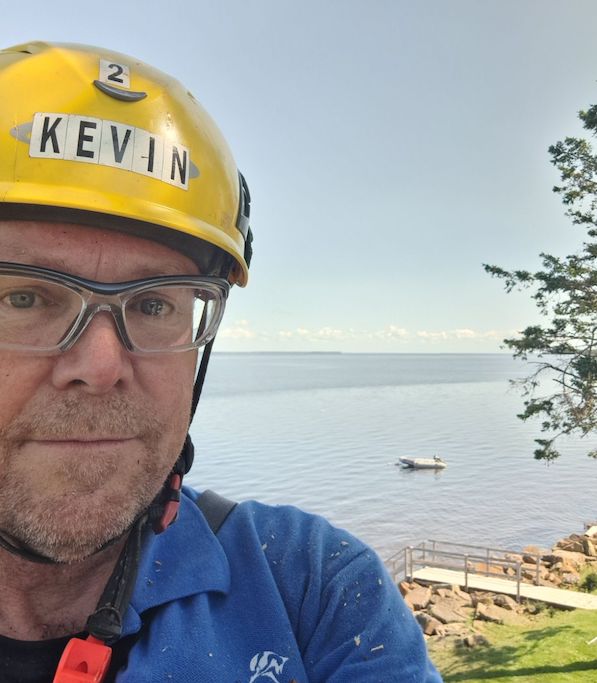
That recovery involved collaboration with the wonderful Greg Soper and Meghan Barrett.
Even jobs that don’t make you sweat can still make you sore. When Meg does DutchTrig injections, she is often stabbing through thick bark for one or two full days. That can wear on your dominant shoulder and elbow very quickly! When possible, Meg uses her body weight to shove the chisel through the bark instead of relying on her joints.
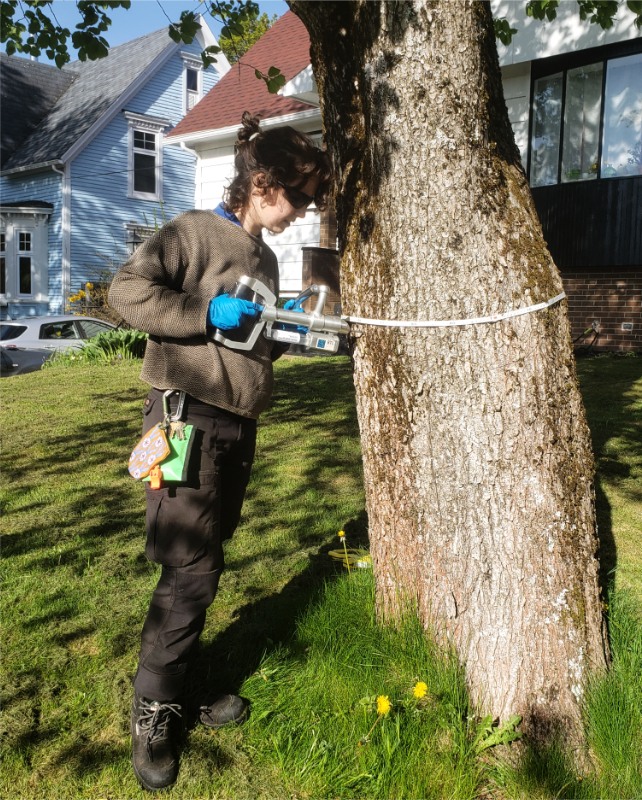
In short, our policy is to prioritize long-term wellness over short-term productivity. The last thing we want is for someone to overextend themselves for the sake of being quick. The consequences of work-related injuries can be long-lasting, and we are glad to do things in a calculated and thoughtful way if it means taking better care of ourselves and each other (and in turn, your trees!).
How do you stay healthy on the job? We love to compare strategies and ideas for workplace wellness.